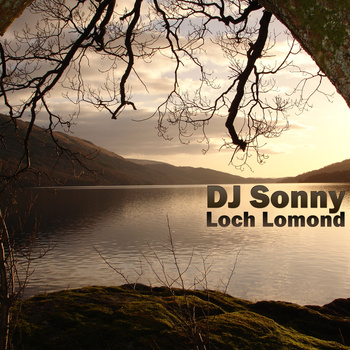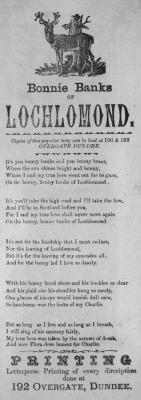Categories
The Sonny Sonny Banks of Loch Lomond
by Nadine Lee

In the little community of Marchmont in Edinburgh, one of the interesting characters you’ll see about the streets is Sonny Fascia, otherwise known as DJ Sonny. I first met Sonny at the cosy pub in the heart of the area The Earl of Marchmont, where he introduced me to his unique brand of Scottish turntablism and hip-hop.
Upon further research into Sonny’s repertoire I discovered his version of the traditional Scottish tune Loch Lomond, which samples American jazz artist Maxine Sullivan’s 1955 recording. The song became a career defining hit for Maxine, and coincidentally was the first and last song she recorded over her 40 year career. Sonny’s version is a distinctly more 21st century affair – mixing jazz, beats and scratch to form an upbeat and contemporary version of the veteran Scottish classic.
Loch Lomond is one of those perennial tunes that has had the ability to stay popular over hundreds of years, through either its infectious melody or the surprisingly dark historical context behind the song. Unfortunately nothing concrete is known about Lomond’s original composer, however the tune’s conception can be traced to sometime between the Jacobite Rebellion of 1745 and the song’s earliest printed publication in 1841. In John Purser’s monumental 1992 work Scotland’s Music, Purser states that the song is usually attributed to a languishing Jacobite prisoner sentenced to death in a prison at Carlisle around the time of the Rebellion.

Early publication, circa 1880
According to legend, the Government soldiers were rather fickle in the way they decided the fate of the Jacobite prisoners. Some were picked at random to be hung, while others were simply released and told to walk home back to Scotland. The dominant theme of the song is said to refer to the ancient Celtic belief that if you die away from your home country, then your spirit returns home by an underground route called ‘the low road’. However the lack of a definitive connection with the songwriter lends the song open for a multitude of interpretations – with others believing the song was sung by the lover of a captured Jacobite soldier set to be executed in London following a show trial. The heads of the executed soldiers were then set upon pikes and exhibited in all of the towns between London and Edinburgh in a procession along the ‘high road’ (the most important road), while the relatives of the soldiers walked back along the ‘low road’ (the ordinary road traveled by peasants and commoners). In another version dated around 1880, the song’s lyrics have been altered to become a lament between Jacobite heroine Flora MacDonald and Bonnie Prince Charlie.
Refrain:
O ye’ll tak’ the high road and I’ll tak’ the low road,
An’ I’ll be in Scotland afore ye;
But me and my true love will never meet again
On the bonnie, bonnie banks O’ Loch Lomond.
Verse 1:
By yon bonnie banks and by yon bonnie braes,
Where the sun shines bright on Loch Lomond.
Where me and my true love were ever wont to gae
On the bonnie, bonnie banks O’ Loch Lomond.
Verse 2:
‘Twas there that we parted in yon shady glen,
On the steep, steep side O’ Ben Lomon’,
Where in purple hue the Hieland hills we view,
An’ the moon comin’ out in the gloamin’
Sonny’s version of Lomond came about after a fruitless search on the net for hip-hop with a Scottish flavour. He made the song over two days and released it earlier this year online. A regular DJ at clubs around Edinburgh, Sonny produces music through his record label Burgh Records and forms half of the Scottish hip-hop group Perfect Practice. After DJing his way around the world, Sonny returned to Scotland and began producing his own hip-hop gaining him an international following.
The song has been appropriated by artists in many different mediums over the years including Bill Haley & His Comets, Mark Knopfler, Rod Stewart, Runrig and AC/DC. The tune is featured in a song sung by Scottish Terrier Jock in the Disney film Lady and The Tramp, and Scottish poet and folklorist Andrew Lang wrote a poem based on the song in 1876:
There’s an ending o’ the dance, and fair Morag’s safe in France,
And the Clans they hae paid the lawing,
And the wuddy has her ain, and we twa are left alane,
Free o’ Carlisle gaol in the dawing.
(Morag meaning great one in Gaelic, referring to Bonnie Prince Charlie; and wuddy meaning a hangman’s noose).
Whatever the truth of the tune’s origins, the famous song has timeless appeal proved by it’s constant reincarnation in so many endearing ways. Sonny’s 2013 version provides a contemporary connection to Scotland’s history, using an iconic melody bound with a very 21st century way of making music.


